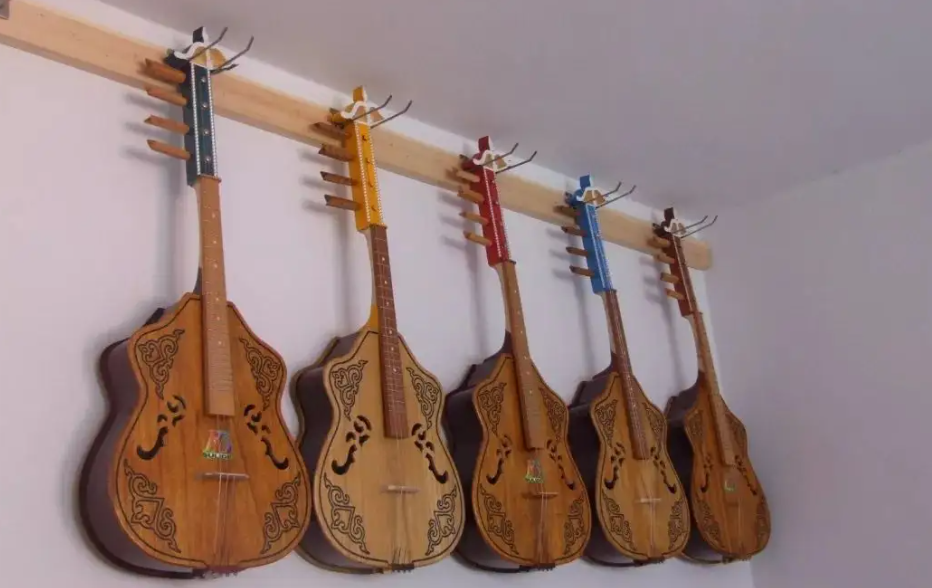What ethnic musical instruments are there in Inner Mongolia?
What national musical instruments are there in Inner Mongolia? Which is the best national musical instrument in Inner Mongolia?
1. Matouqin. Matouqin is a folk stringed instrument of Mongolian people in China. Mongolian is called Chuoer. The piano is wooden, about a meter long, and has two strings. The resonance box is trapezoidal. The sound is mellow, with low spin and low volume. It is said that a shepherd misses the dead pony. He used the leg bone as the column, the skull as the tube, and the tail hair as the bowstring to make a two-string lyre, and carved a horse head mounted on the top of the handle according to the appearance of a pony, hence the name.

2. Huqin. Mongolian bow-pulled stringed instrument. It was called Hull in ancient times. Mongolians are often called Sinakanhur, which means spoon piano, or Xihu for short. Yuan Dynasty documents are called Huqin. Chinese directly translated into spoon-shaped huqin, also known as horsetail huqin. It has a long history, unique shape, soft tone and full of grassland flavor. Can be used for solo, ensemble or accompaniment. It is very popular in Inner Mongolia Autonomous Region, especially Horqin and Zhaowuda League in the east.
3. Four Hus. Sihu, stringed instrument, also known as Siguzi, Sixian or violin. The Mongolians call it Hutanger, which originated from the ancient Xiqin. Song Dynasty Chen Min's "Book of Music": Xi Qin Si Hu Ben Hu Le is also. In the Qing Dynasty, it was used for the court band and called it the violin. Qing Dynasty "Lu Zhengyihoubian": violin, four strings, similar to Ruan Xian, but also Xiqin and the like. It is an ancient bowed stringed instrument commonly used by northern peoples. Mainly popular in Inner Mongolia, Shanxi, Shaanxi, Hebei, Henan, Sichuan and other places are also very popular.
4. Hubis. There are four strings, the first being a silk string, which is now replaced by a complete set of Zhongruan strings. From the inside to the outside are the winding string, the third string, the second string and the sub string. Depending on the sound quality, there is a Yamaguchi, 24 or 25 levels, suitable for playing multi-voice, so mid-voice instruments are often made in bands. The Hubis developed by Zingler is now widely used.
5. Yatok. That is Mongolian zither. The Mongolian zheng is basically the same as the guzheng circulated in the Central Plains in structure and technology, but the music played by the popular guzheng in Inner Mongolia is Mongolian folk songs and instrumental music.
6. Taiping drum. Mongolian and Manchu percussion instruments. Its drum frame is made of iron, round, with Mengniu, horse, sheepskin and ethnic patterns on the surface of the drum. There are three to eight small copper suonas or iron rings on the handle. The drums are played with rattan, and the techniques include knocking, beating, shaking, shaking, trembling, etc. There is no certain height. Decorative red sakura ears are tied to the keys and handle. Often used as dance equipment, such as duet, group dance and so on.
7. Mongolian Cape. This is the horn used by Mongolian lamas in the Qing Dynasty when they were chanting sutras. It is said to be one of the ancient music used in the battle of the Mongolian army in the Yuan Dynasty. According to "Clearance Notes", the Mongolian horn, also known as the Mongolian number, has a wooden hollow with two upper and lower sections, and finally adds a gilded copper mouth, male and female. The male has a slightly larger inner diameter and a cloudy voice, while the female has a smaller inner diameter, clearer sound, and equal length. This musical instrument was circulated among the Balhu Mongols.
8. Fire does not think. This is an ancient national musical instrument. It is said that it was brought by Wang Zhaojun. Her lute was broken and had to be made smaller, so she became Huobusi. Huobusi is like a pipa, slightly narrow, with a thin neck, four strings, and the lower part of the handle and the back like a reed joint. The whole body is made of paulownia. The tone is rich, similar to the Mongolian horn.

9. Hu Jia. Hu Jia's 18 beats is such an instrument.
 渝公网安备 50010702504639号
渝公网安备 50010702504639号